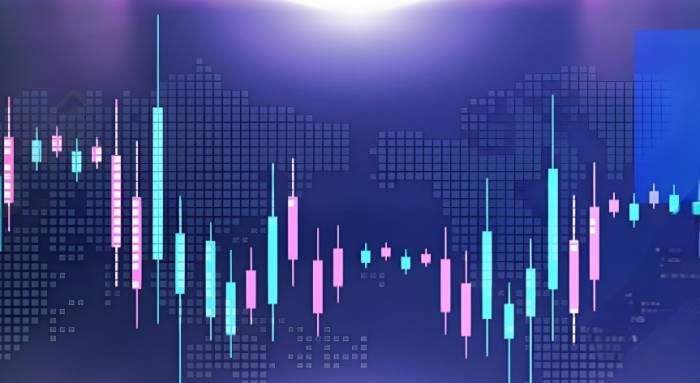Next Year's Rising Stars in the U.S. Stock Market!
As we embark on the future of financial markets, the insights offered by Wharton School professor Jeremy Siegel present a cautious yet intriguing picture for investors. According to Siegel, who has been closely monitoring market trends, the S&P 500 index may experience a significant slowdown in 2025 following two consecutive years of impressive gains. His forecast indicates that 2025 could be a much quieter year compared to the exuberant performances witnessed in 2023 and 2024.
Siegel has articulated a rather restrained outlook, estimating that the expected returns for the S&P 500 in 2025 will be modest, ranging from 0% to 10%. He implies that the growth momentum catalyzed by the AI boom, which led to a notable rise in technology stocks, may not be sustainable in the short term. Indeed, the financial landscape this year has been characterized by a remarkable uptick in stock prices, with the S&P 500 already posting a 26.5% increase due to widespread investor enthusiasm, particularly for stocks tied to artificial intelligence.
This AI trend has significantly influenced a handful of tech giants, their stock prices soaring and consequently driving the S&P 500's ascent. However, Siegel observes that what he refers to as the "Magnificent Seven" stocks, including renowned names like Amazon, Nvidia, and Meta, seem to be losing their steam. He notes that if these dominant stocks, which constitute about a third of the S&P 500, falter or stagnate, it will be challenging for the overall index to replicate the robust returns of the previous years.
Advertisement
Furthermore, analysts from Bank of America echo Siegel's sentiments, suggesting that the tech stock trading frenzy may be heading toward a cyclical peak. They emphasize that future movements in U.S. Treasury yields will play a pivotal role in determining the trajectory for risk assets, speculating that rising yields will likely restrain market growth in 2025.
Despite the prevailing dominance of tech stocks as crucial growth drivers in the current market, there is a growing narrative suggesting a potential shift toward smaller companies. Recent trends indicate that traders are increasingly betting on favorable market policies, which could bolster underappreciated assets, particularly small-cap stocks. In fact, since November 5, the Russell 2000 index, which represents small-cap companies, has risen by 7%. Investors expect that U.S. domestic firms will benefit from promised regulatory relaxations and tax cuts, hinting at a potential renaissance for smaller players in the stock market.
Siegel proposes a rather counterintuitive narrative: perhaps the "Magnificent Seven" will remain dormant in 2025, paving the way for small and mid-cap stocks, which are currently undervalued, to seize a moment in the spotlight. This suggestion opens the door to a critical discussion about the relevancy and potential of small-cap stocks as they navigate an evolving financial landscape.
In the intricate and fluctuating environment of contemporary financial markets, the eyes of analysts and investors remain cautiously focused on the performance of small-cap stocks. Yet, skepticism abounds over their ability to sustain upward momentum. Small-cap stocks occupy a unique niche in financial markets; their market capitalization may not rival that of prominent blue-chip companies, yet their agility and potential for substantial growth have always attracted a certain segment of investors.
To truly understand the dynamics at play, one must consider historical precedents. For instance, a detailed report from Capital Economics released last month shed light on past behaviors of small-cap stocks, particularly referencing 2016—a year marked by a vigorous surge in small-cap equities, praised for showing resilience through macroeconomic recovery and favorable policy interventions. However, the subsequent downturn in 2017 starkly contrasted the previous year's success, serving as a sobering reminder of the volatility inherent in small-cap investments.
This notable discrepancy rings alarm bells for those currently displaying blind optimism regarding small-cap stocks' price increases. It serves as a clarion call for market observers and analysts alike to exercise greater caution. They must delve deep into the underlying risks and uncertainties that could potentially jeopardize the growth trajectory of these companies.
For investors, it is essential to adopt a diligent and strategic approach toward market analysis, especially concerning small-cap stocks. The lessons learned from past market behaviors should foster a culture of diligence, ensuring that investment decisions are rooted in a strong understanding of both historical context and current market conditions.

In conclusion, as we analyze the market's potential for 2025, Jeremy Siegel's insights serve as a critical touchpoint for understanding the landscape ahead. While technology stocks have powered the market over the last two years, the anticipated cooling phase should prompt investors to reassess their strategies. The financial world, with its cyclical nature and unpredictable twists, reminds us continually of the importance of vigilance and strategic foresight in navigating both emerging opportunities and potential pitfalls.